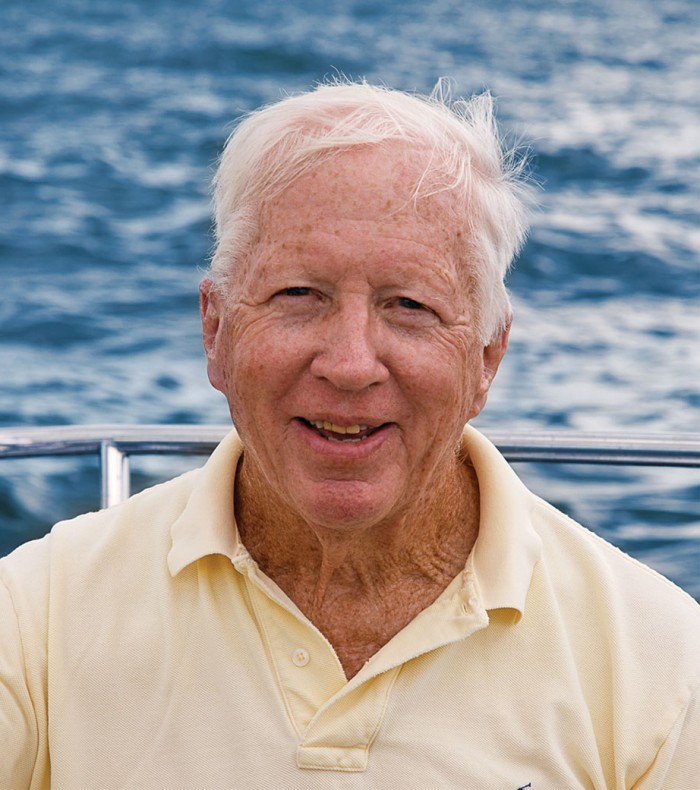Bar codes are a hallmark of modernity, found on groceries, parcels, machine components, tickets, and billions of other items. You can thank David Collins for developing their first successful application and advancing them through an entrepreneurial career that’s still under way.
In the mid-1950s, while studying civil engineering as an undergraduate at Villanova University, Collins took a summer job with the Pennsylvania Railroad. He had a “grand adventure” rebuilding a bridge in five days after a wreck, but he also noticed that the railroad’s punch-card system for daily tracking of rolling stock was prone to errors. “It led to a lot of chaos,” he recalls.
Collins went on to the Sloan School, where he says he cultivated an “outsized self-assurance working within the scientific business community that has (mostly) served me well ever since.” He also took lessons at the Sailing Pavilion, which led to a lifelong romance with ocean racing and voyaging—and benefited MIT when he donated a 43-foot racing sloop to the Institute in 2011.

At GTE Sylvania after graduation, Collins convinced his managers to let him develop what became the KarTrack Automatic Car Identification System, which tagged railcars with colored lines read by photomultiplier vacuum tubes. Early installations led to its selection as a national standard for railcars, vans, and freight containers in 1967. Sylvania didn’t want to pursue broader applications, so the next year Collins founded Computer Identics to develop laser-scanned, black-and-white bar codes, which found instant interest in the auto industry, retail, and other sectors.
“It was fascinating how the technology got taken up,” he says. “In 1977, the New York City Marathon contacted us about collecting finishing times with bar codes. I thought it was crazy, but it showed how bar codes could simplify a process with a lot of room for error. That’s what I enjoy most—simplifying complex processes.”
Collins’s current business venture, Data Capture Institute, was founded in 1987 to focus on integrating bar codes into advanced information technology—a pursuit of “interesting things that don’t conflict with sailing,” he jokes. One major success: a Federal Aviation Administration program for uniquely identifying components of the air traffic control system, which the Department of Defense has adopted in recent years to track aircraft parts. He also serves as chair of A2B Tracking, founded by his sons Pete and Tim—next-generation bar-code entrepreneurs.
Collins and his wife, Joan, live in Duxbury, Massachusetts, where they enjoy sailing their boat Next Dimension and often host their eight children and 12 grandchildren.
“A big family is fun in a very special way,” he says.
Keep Reading
Most Popular
Large language models can do jaw-dropping things. But nobody knows exactly why.
And that's a problem. Figuring it out is one of the biggest scientific puzzles of our time and a crucial step towards controlling more powerful future models.
The problem with plug-in hybrids? Their drivers.
Plug-in hybrids are often sold as a transition to EVs, but new data from Europe shows we’re still underestimating the emissions they produce.
How scientists traced a mysterious covid case back to six toilets
When wastewater surveillance turns into a hunt for a single infected individual, the ethics get tricky.
Google DeepMind’s new generative model makes Super Mario–like games from scratch
Genie learns how to control games by watching hours and hours of video. It could help train next-gen robots too.
Stay connected
Get the latest updates from
MIT Technology Review
Discover special offers, top stories, upcoming events, and more.